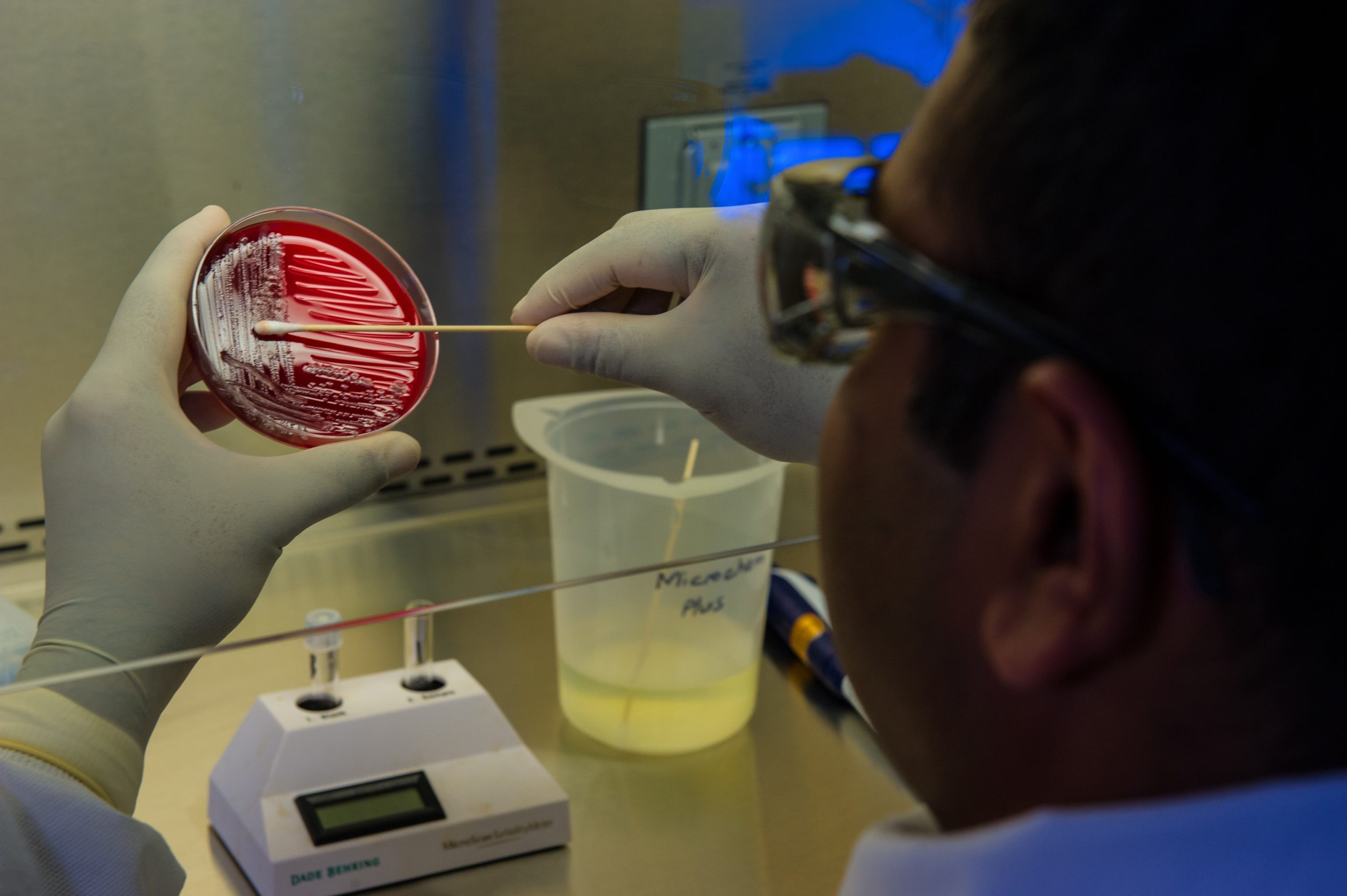What prevents extinctions in a competitive world? Biologists have wondered for centuries. Now scholars found that it involves a doughnut shape and a scorched earth strategy.
To find out how two bacterial strains can co-exist close to each other, researchers cultivated bacteria on petri dishes. They used pairs of E. coli strains extracted from the guts of a giraffe, leopar, monkey and a human being. (Photo: CDC / Unsplash)
We have a myriad of bacterial species (strains) that co-exist in our guts. That is nothing new. They play a vital role in our health. But when you come to think of it, it is actually quite remarkable that they do co-exist in our intestines. If they live off the same food, isn’t one strain – the strongest or the one that proliferates the quickest – ultimately not bound to eradicate the other?
This question has captivated biologist ever since Darwin published his theory of evolution. And it applies to all organisms. Not just bacteria. How can we explain biodiversity in general?
A giraffe, leopard, monkey, steer and a human being
To find out what biological mechanism allows two bacterial strains to co-exist, researchers from Amsterdam, TU Delft and the USA cultivated bacteria on petri dishes with a gel, a sugary agar. They used pairs of E.coli strains extracted from the guts of a giraffe, leopard, monkey, steer and a human being. One of each pair was coloured blue – through a simple genetic alteration – and one red.
The results of these series of experiments were published earlier this month in Nature. What the researchers saw was that initially, red dominates and expands and blue is ousted. But the red advance suddenly stops – just when the blues emerge and seem to take over the reds’ front. The next wave is blue only. By reaching the farther regions first, the blue bacteria can finish the localised sugars. Hence, they give the red no chance there and block their advance, a bit like the scorched earth strategy.
They seemed to share territories in a dot-and-doughnut shape
In short, the researchers discovered that the two cohabitant strains can spontaneously segregate into two distinct regions. They seemed to share territories in a dot-and-doughnut shape. The one (red) colonising the centre of the dish can grow faster while the other one (blue) forming a ring around its competitor can move away and swim faster. This pattern occurred over and over again.
Both strains face a trade-off between motility and growth that eventually prevents a strain to both move and grow the fastest, and thus take over the whole habitat. “Mathematically speaking, both strains reached a stable equilibrium where either can invade the other. This is the hallmark of coexistence,” writes one of the authors, Erçağ Pinçe of Harvard University, in a Tweet, which was retweeted dozens of times by microbiologists.
The publication appears to have had quite an impact in biology. The Head of the lab where the experiments took place, Sander Tans, of the biophysics lab at AMOLF In Amsterdam, is not surprised by the impact.
‘Some bacteria apparently are good at proliferating and others at migrating’
“This is an important discovery,” says Tans, who is also a professor at the Bionanoscience Department at TU Delft. “Some bacteria apparently are good at proliferating and others at migrating. But they cannot excel at both. This makes sense because both activities take a lot of energy. Such specialisation is often observed, though its effects on coexistence are often difficult to prove. Here we could manipulate the capacity to migrate and proliferate by genetic engineering, and show that this capacity alone is enough to allow coexistence. Other mechanisms like exchanging toxins or dependencies like in food-webs are thus not required per se.”
The findings can have implications for medical research. Bacterial populations in our guts play essential roles in digestion, immune response, and probably many more aspects that science still has to reveal. Certain bacterial ecosystems can cause obesity or diabetes type 2.
Tans continues. “Up to now, research on bacteria has mainly focused on assessing the bacterial genetic diversity present in the guts. But our research suggests that the spatial distribution of the strain can also be of importance. And in light of increasing antibiotics resistance, it may also be a good idea to develop therapies that influence complete ecosystems rather than focus on specific strains.”
- Sebastian Gude, Erçağ Pinçe, Katja M. Taute, Anne-Bart Seinen, Thomas S. Shimizu, and Sander J. Tans, Bacterial coexistence driven by motility and spatial competition, Nature (2020), DOI : 10.1038/s41586-020-2033-2
Do you have a question or comment about this article?
tomas.vandijk@tudelft.nl


Comments are closed.